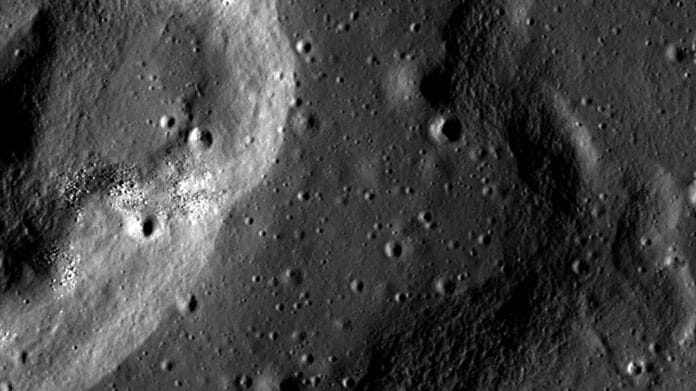Although its precise mechanism is unknown, thermal moonquakes are periodic seismic disturbances seen on the lunar surface that are temporally associated with the lunar day-night cycle. During the Apollo 17 mission, four geophones were deployed as part of the Lunar Seismic Profiling Experiment (LSPE), which used explosive shots to describe the near-surface structure of the landing site. After completing the mission, the array was reactivated in passive recording mode several times and recorded thousands of thermal moonquakes.
In a new study, researchers analyzed seismic activity on the Moon. They characterized these events and discovered that some were not what they seemed.
The Moon’s temperature varies dramatically since it lacks an atmosphere to protect it, going from up to 250 degrees Fahrenheit during the day to -208 degrees F at night. The Moon‘s surface expands during hot weather and contracts during cold weather, causing thermal moonquakes, which are minor trembling and breaking near the surface.
According to the research, thermal moonquakes happen every afternoon as the Sun reaches its lowest point in the sky and the Moon’s surface cools. However, the study’s machine-learning algorithm also found additional indicators of seismic activity in the morning that didn’t resemble the moonquakes in the evening. Unexpectedly, it turned out that they weren’t thermal moonquakes after all.
The morning tremors were coming from the Apollo 17 lunar landing base, which was a few hundred meters away, according to the researchers who were able to triangulate the location of the shaking. The seismic array picked up the groaning vibrations of the building as it warmed and expanded in the morning.
Allen Husker, research professor of geophysics and co-author of the new study, said, “Every lunar morning when the Sun hits the lander, it starts popping off. Every five to six minutes another one, over a period of five to seven Earth hours. They were incredibly regular and repeating.”
Although thermal moonquakes are too small for anyone standing on the Moon’s surface to feel them, the research provides crucial information on the thermal contraction and expansion that future lunar landers and their associated equipment should be prepared for.
Husker says, “It is likely that landers from other Apollo missions also experience this creaking and expansion, though seismometers from those missions were designed to measure different frequencies than thermal moonquakes.”
“We will be able to map out the subsurface cratering and to look for deposits. Certain regions in the Moon’s South Pole craters never see sunlight; they are permanently shadowed. If we could put up a few seismometers there, we could look for water ice that may be trapped in the subsurface; seismic waves travel slower through the water.”
Journal Reference:
- F. Civilini, R. Weber, A. Husker. Thermal Moonquake Characterization and Cataloging Using Frequency-Based Algorithms and Stochastic Gradient Descent. JGR Planets. DOI: 10.1029/2022JE007704
